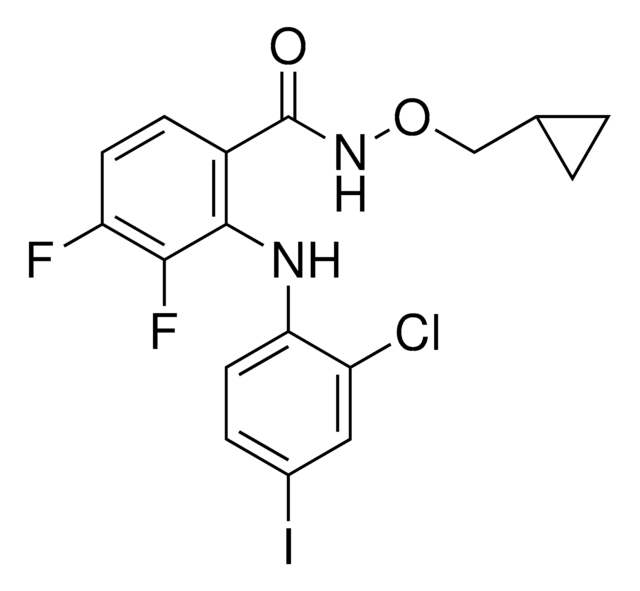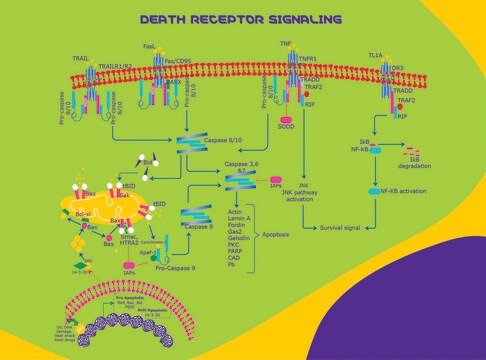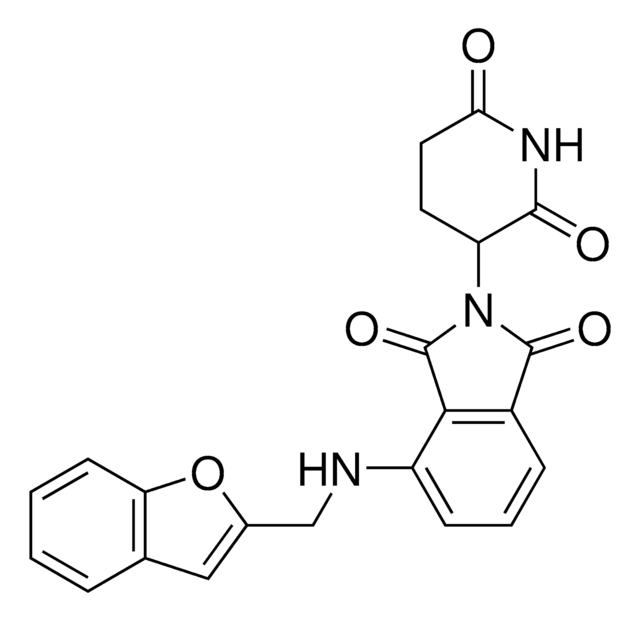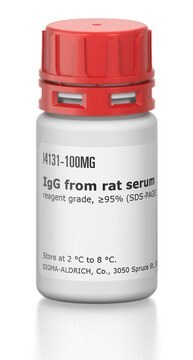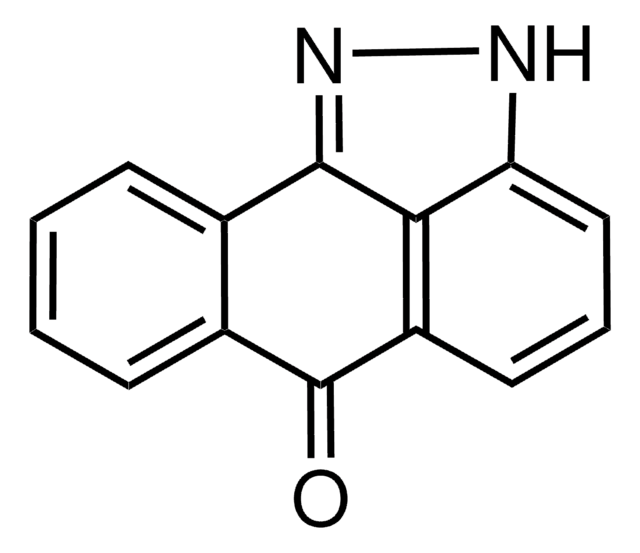S8689
Fas Ligand, soluble human
recombinant, expressed in HEK 293 cells, lyophilized powder
Synonym(s):
SuperFas Ligand™
About This Item
Recommended Products
biological source
human
Quality Level
recombinant
expressed in HEK 293 cells
Assay
≥95% (SDS-GE)
form
lyophilized powder
mol wt
32 kDa by SDS-PAGE (nonglycosylated form, under reducing conditions)
35 kDa by SDS-PAGE (glycosylated form, under reducing conditions)
technique(s)
ligand binding assay: suitable
UniProt accession no.
storage temp.
−20°C
Gene Information
human ... FASLG(356)
Application
Biochem/physiol Actions
Legal Information
Storage Class Code
11 - Combustible Solids
WGK
WGK 3
Flash Point(F)
Not applicable
Flash Point(C)
Not applicable
Certificates of Analysis (COA)
Search for Certificates of Analysis (COA) by entering the products Lot/Batch Number. Lot and Batch Numbers can be found on a product’s label following the words ‘Lot’ or ‘Batch’.
Already Own This Product?
Find documentation for the products that you have recently purchased in the Document Library.
Our team of scientists has experience in all areas of research including Life Science, Material Science, Chemical Synthesis, Chromatography, Analytical and many others.
Contact Technical Service